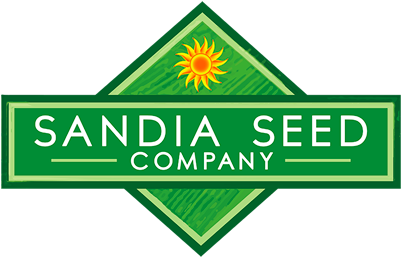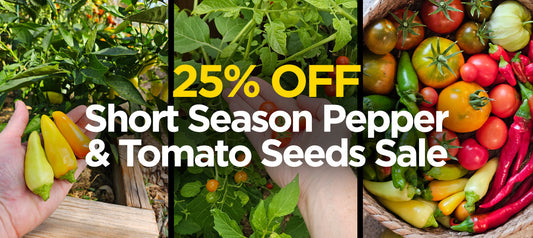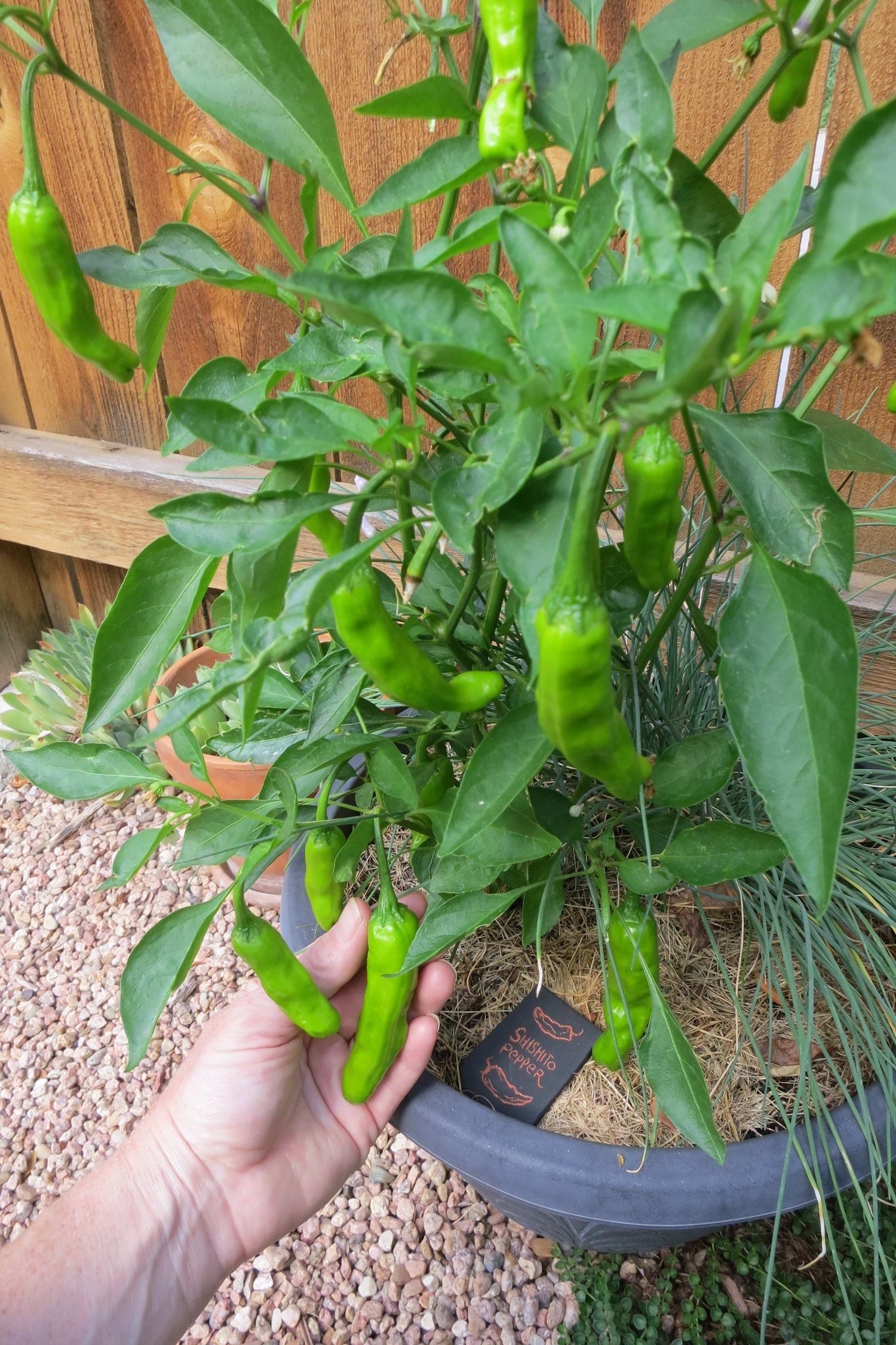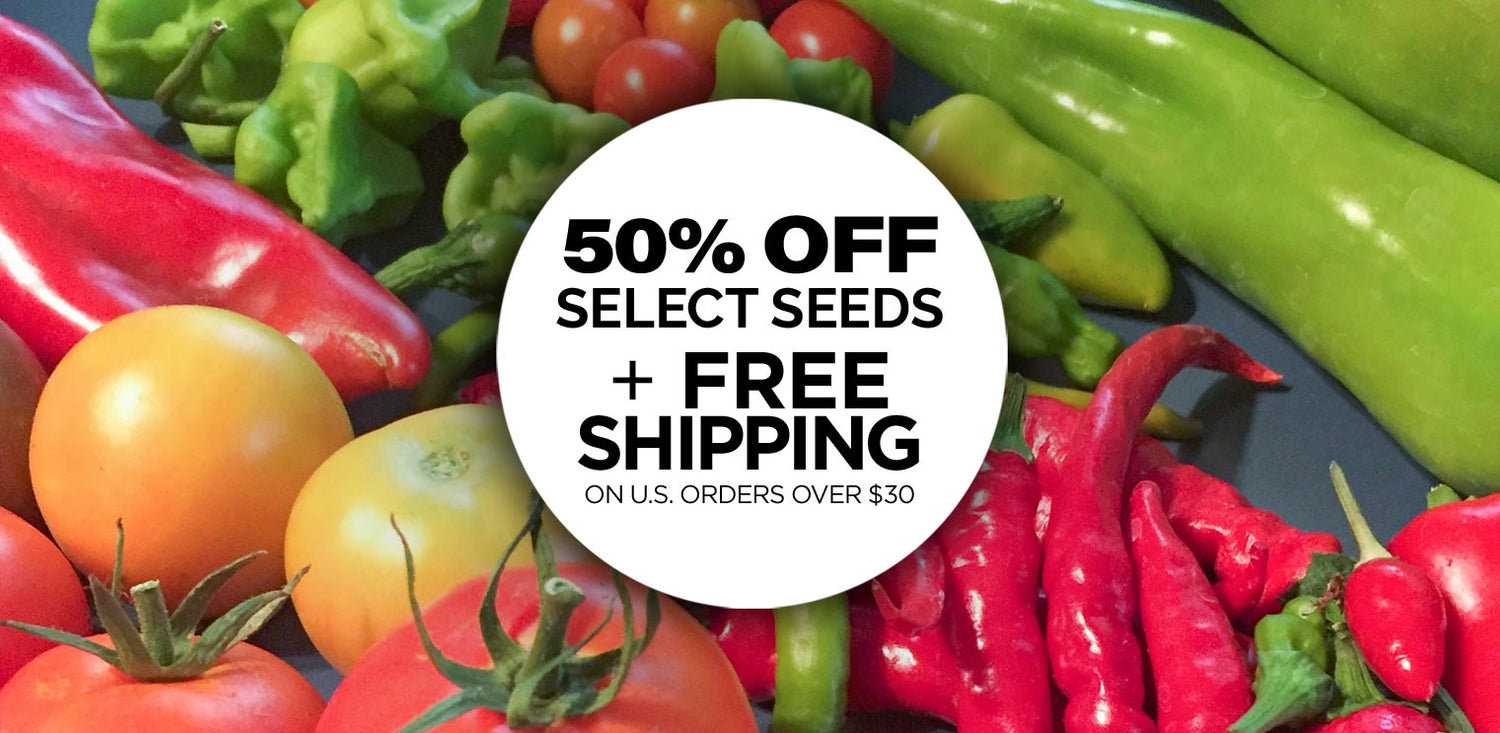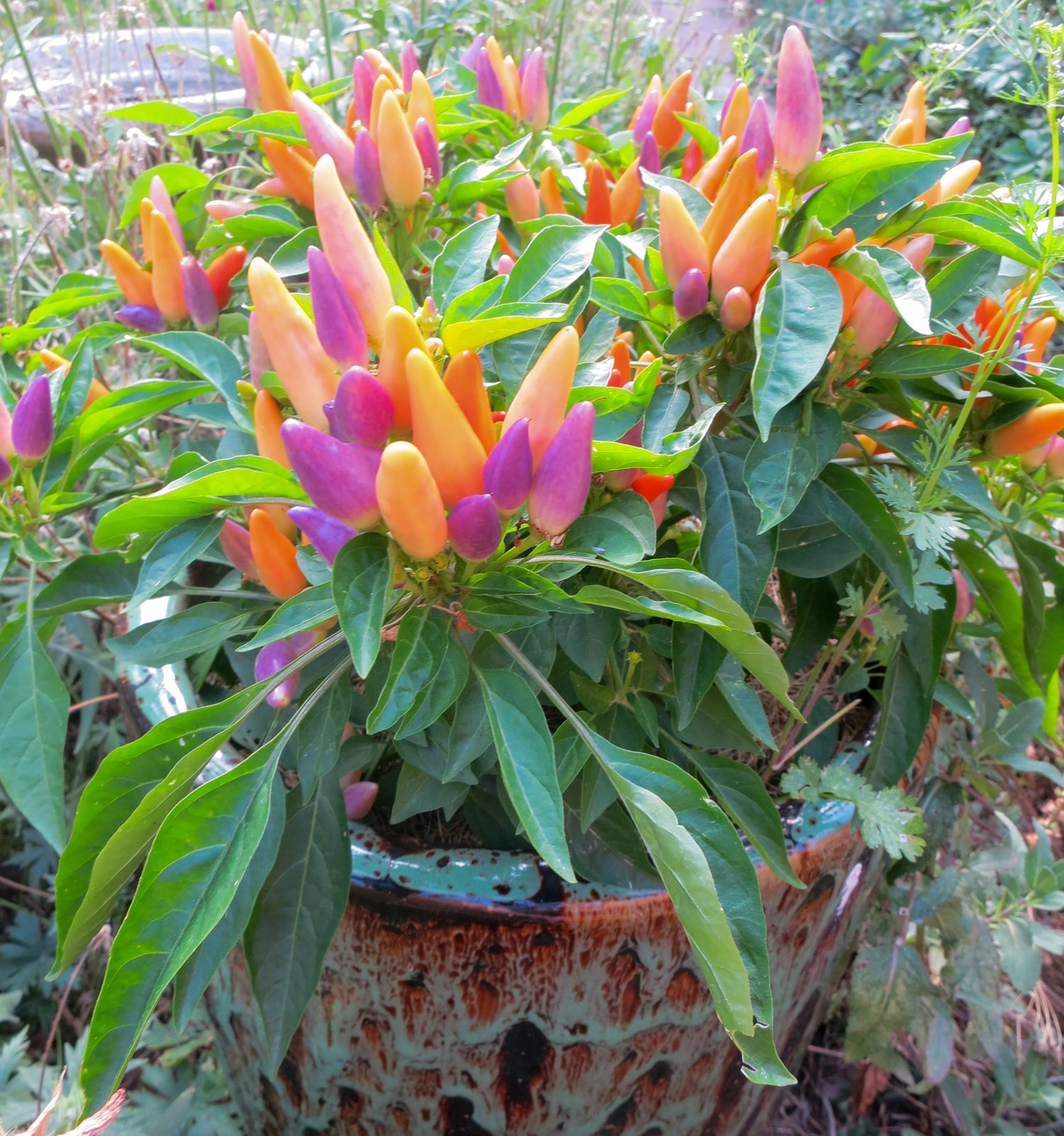Planting Peppers Tips
Winter is the time for dreaming! Next season for our pepper garden, we plan to plant a wide variety of peppers, including some
Habaneros,
Habanadas (no-heat all flavor Habaneros - which we think have the best flavor in hot sauce!),
Cayennes,
Jalapenos,
Sriracha peppers,
Banana Peppers,
Shishitos,
Mini Bells, and several
Hatch chile varieties, of course!

Can't wait to see some happy little seedlings again.
Planting Peppers From Seeds:
The trick to successfully starting peppers from seed is to start them indoors under lights. This helps you to keep them warm, especially during the germination period. If you keep them warm with a seedling heat mat or in a warm area, keeping them at a constant 80-90˚ F is best for fastest germination. This is especially true for super hot peppers, which can take 21+ days to germinate, and they do best when kept warm during that long period. Once they sprout, normal room temperature is fine.
After your pepper seeds sprout, be sure to give your pepper seedlings stimulation from a small fan or by brushing them daily with your hands. This will help them grow stockier and less leggy, and will also help prevent Damping Off, a common seed ailment that results in seedlings shriveling and dying.
Planting Peppers - Best Lighting:
Good light is important, a sunny window in winter does not usually provide enough light for the pepper plants to grow stocky. You can use simple florescent lights or grow lights. Don't get too bright a light though, as that can burn young seedlings, as seen in these photos.
We start a lot of our seeds in a couple of old Aerogarden hydroponic systems using their foam seedling tray, they have florescent lights and the peppers seem to do well started in these. We typically transplant them into individual pots once they grow a few sets of leaves, as they get crowded in the Aerogarden. Other people use soil blocks, or 4" pots.

Planting Peppers - Best Soil:
If planting in seedling pots, a fast draining seedling mix or a fine potting soil mix is your best bet for planting peppers. Do NOT use garden soil or top soil, which are not good for starting seeds indoors. Pepper plants do NOT like soggy feet, so a well-draining mix is best, and you also don't want to water too often. Let them dry out a bit between waterings, and don't let them sit in water for too long as they will start to turn yellow and stop growing if their roots are drowning.
We also use sponges in our Aerogarden seedling starter tray (shown above), but these are small plugs so the pepper seedlings have to be transplanted into their own pots with seedling mix after a few weeks of growing so they don't get rootbound in the foam tray.
Planting Peppers - Transplanting to larger Pots
If you start them early enough, your peppers may outgrow their original pot or growing space. It's important to let the roots keep growing larger, so transplanting into deep larger pots is ideal if you have the room! The larger the peppers' roots are by spring, the faster they'll grow when transplanted into the garden or final large container.
Once spring has sprung and all chances of frost have passed, you can bring your seedlings outside to get used to the sun's rays and breezes. It's important to ease them into it by hardening them off first by exposing them to the sun in small doses and working up to full days of sun. Once they've had time to acclimate after a week or so you can transplant them into the garden.

If you want to harvest peppers earlier in the season, be sure to pick the fastest growing peppers! These varieties are satisfying to grow as you will be picking peppers earlier in the summer and enjoy them for the rest of the season!






